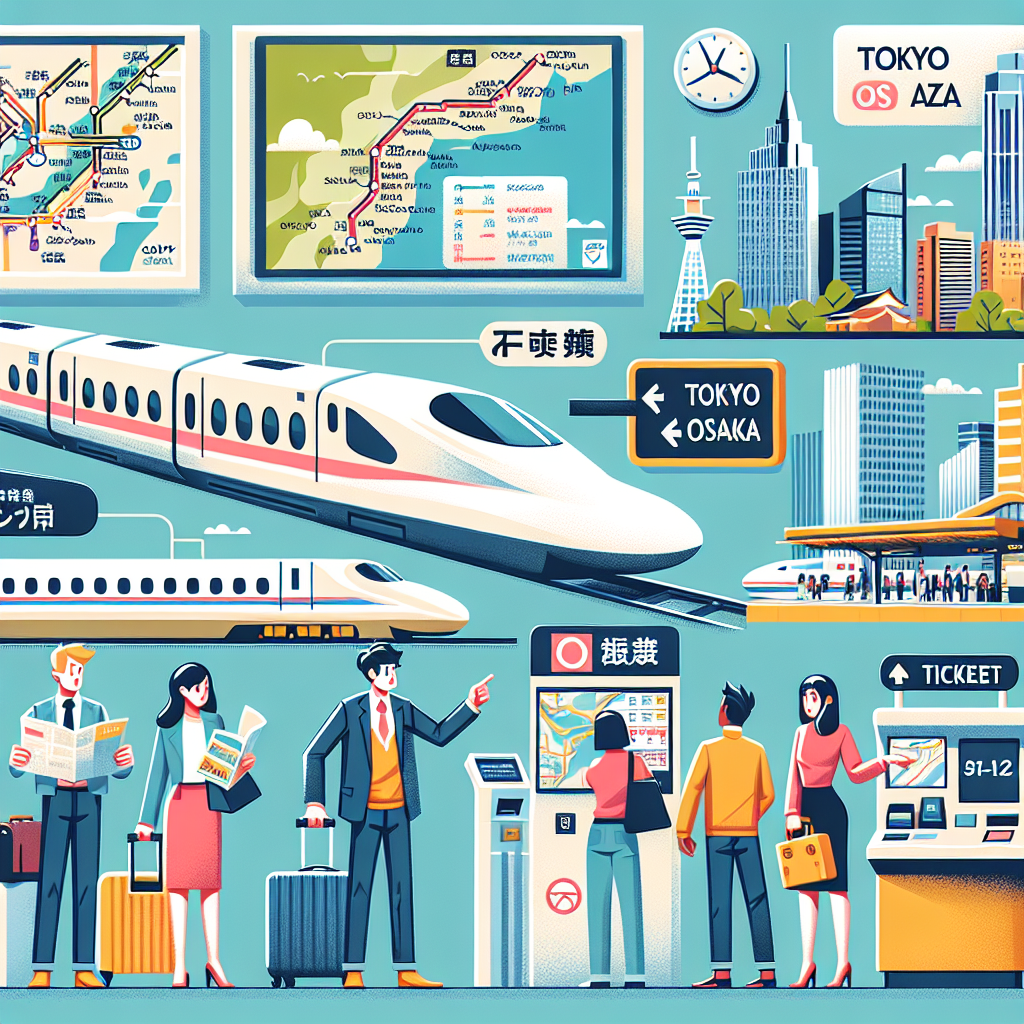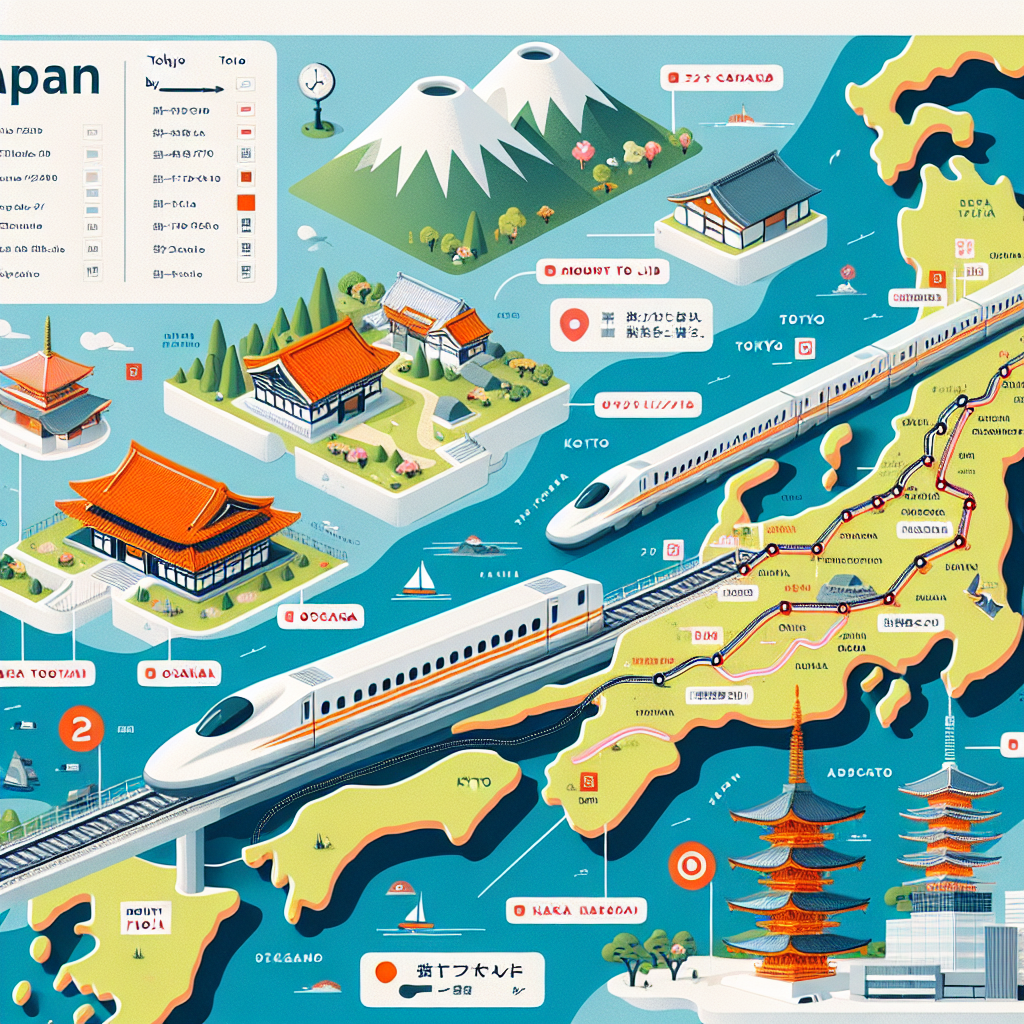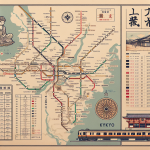Choosing the Right Train: Shinkansen vs. Limited Express
When planning a trip from Tokyo to Osaka, one of the most exciting aspects is choosing the right train for your journey. Japan is renowned for its efficient and punctual rail system, and this route offers two primary options: the Shinkansen, or bullet train, and the Limited Express trains. Each has its unique advantages, and understanding these can help you make the best choice for your travel needs.
First, let’s dive into the Shinkansen, which is often the first choice for travelers. The Shinkansen is not just a mode of transportation; it’s an experience in itself. With speeds reaching up to 320 kilometers per hour (about 200 miles per hour), you can travel from Tokyo to Osaka in approximately 2.5 to 3 hours, depending on which service you choose. The Nozomi service is the fastest, making fewer stops along the way, while the Hikari and Kodama services take a bit longer due to additional stops. Regardless of which Shinkansen you board, you’ll enjoy comfortable seating, clean facilities, and stunning views of the Japanese countryside, including the iconic Mount Fuji on clear days.
On the other hand, the Limited Express trains offer a different experience. While they are slower than the Shinkansen, taking around 4 to 5 hours for the journey, they can be a more budget-friendly option. The Limited Express trains, such as the JR Special Rapid Service, provide a comfortable ride with spacious seating and onboard amenities. They also make more stops, which can be a great opportunity to explore smaller towns along the way. If you have the time and are looking to experience more of Japan’s local culture, this could be a delightful choice.
When deciding between the two, consider your priorities. If speed and convenience are at the top of your list, the Shinkansen is undoubtedly the way to go. It’s perfect for those who want to maximize their time in Osaka, allowing you to arrive quickly and start exploring the vibrant city. Additionally, if you’re traveling during peak seasons or on weekends, it’s wise to book your Shinkansen tickets in advance, as they can sell out quickly.
Conversely, if you’re traveling on a budget or have a more flexible schedule, the Limited Express trains can be an excellent alternative. They often have lower fares, and if you’re using a Japan Rail Pass, you can ride many of these trains without additional costs. This option allows you to soak in the scenery and perhaps even make impromptu stops at charming towns like Himeji, famous for its stunning castle.
Ultimately, the choice between the Shinkansen and Limited Express trains comes down to your travel style and preferences. If you’re after speed and efficiency, the Shinkansen will whisk you away in no time. However, if you’re looking for a more leisurely journey with opportunities to explore, the Limited Express trains might be just what you need. Whichever option you choose, both will provide a comfortable and enjoyable ride, making your trip from Tokyo to Osaka a memorable part of your Japanese adventure. So, pack your bags, grab your tickets, and get ready for an unforgettable journey through one of the most beautiful countries in the world!
Ticket Options and Pricing: How to Save on Your Journey

When planning your journey from Tokyo to Osaka, one of the most exciting aspects is navigating the ticket options and pricing, especially if you’re looking to save a few yen along the way. The Shinkansen, or bullet train, is undoubtedly the most popular choice for this trip, offering a swift and comfortable ride that can whisk you from one bustling metropolis to another in just about two and a half hours. However, understanding the various ticket options available can make a significant difference in your travel budget.
First and foremost, let’s talk about the different types of Shinkansen services. The Nozomi is the fastest option, making fewer stops and getting you to Osaka in record time. However, it’s worth noting that the Japan Rail Pass does not cover Nozomi trains, which might be a consideration if you’re planning to travel extensively throughout Japan. Instead, you might want to opt for the Hikari or Kodama services, which are slightly slower but still incredibly efficient. The Hikari takes about three hours, while the Kodama stops at every station along the way, making it the longest option. Choosing one of these alternatives can save you money while still providing a fantastic travel experience.
Now, let’s dive into the ticket pricing. A one-way ticket on the Nozomi can cost around 14,000 yen, while the Hikari and Kodama options are generally a bit cheaper, ranging from 13,000 to 14,000 yen. If you’re traveling during peak seasons, such as cherry blossom season or the New Year holidays, prices can increase, so it’s wise to book in advance. Additionally, consider purchasing your tickets online or at ticket machines in advance to avoid long lines at the station. This not only saves time but can also help you secure better prices.
For those looking to save even more, the Japan Rail Pass is an excellent option if you plan to travel beyond just Tokyo and Osaka. This pass allows unlimited travel on most JR trains, including the Hikari and Kodama Shinkansen, for a set number of days. While the upfront cost may seem high, if you’re planning multiple trips, it can be a fantastic deal. Just remember that the pass must be purchased before arriving in Japan, so plan accordingly.
Another way to save is by considering reserved versus non-reserved seating. While reserved seats guarantee you a spot, non-reserved seats are available on a first-come, first-served basis and can be a bit cheaper. If you’re traveling during off-peak hours or are flexible with your schedule, this could be a great way to cut costs. Just keep in mind that during busy travel times, non-reserved seats can fill up quickly.
Lastly, don’t forget to check for discounts or special offers. Sometimes, train companies run promotions that can significantly reduce your fare. Websites and travel apps often list these deals, so it’s worth doing a little research before you book your tickets.
In conclusion, traveling from Tokyo to Osaka by train can be both an enjoyable and economical experience if you take the time to explore your ticket options and pricing strategies. By considering different train services, utilizing the Japan Rail Pass, and keeping an eye out for discounts, you can make the most of your journey while keeping your budget intact. Happy travels!
Essential Tips for a Smooth Travel Experience: What to Know Before You Go
Traveling from Tokyo to Osaka by train is an experience that many travelers cherish, not only for the convenience but also for the stunning views along the way. However, to ensure a smooth journey, there are several essential tips to keep in mind before you embark on this adventure. First and foremost, understanding the train options available to you is crucial. The Shinkansen, or bullet train, is the most popular choice, offering a fast and comfortable ride that can get you from Tokyo to Osaka in just about two and a half hours. There are different types of Shinkansen services, such as the Nozomi, Hikari, and Kodama, each varying in speed and number of stops. If you’re looking to save a bit of money, consider taking the Hikari, which is slightly slower but still gets you to your destination in a reasonable time.
Once you’ve decided on your train, it’s important to book your tickets in advance, especially during peak travel seasons like cherry blossom season or the New Year holidays. You can easily purchase tickets online or at ticket counters in train stations. If you’re planning to travel extensively within Japan, investing in a Japan Rail Pass might be a wise choice, as it allows unlimited travel on most trains, including the Shinkansen, for a set number of days. This can not only save you money but also provide flexibility in your travel plans.
As you prepare for your journey, don’t forget to check the train schedules. The Shinkansen runs frequently, with trains departing every few minutes during peak times. However, it’s always a good idea to have a rough idea of when you want to leave, so you can plan your day accordingly. Additionally, arriving at the station early can help alleviate any last-minute stress. Major stations like Tokyo and Shin-Osaka can be quite busy, and navigating through them can take some time, especially if you’re unfamiliar with the layout.
Packing light is another tip that can enhance your travel experience. While the Shinkansen offers ample luggage space, maneuvering through crowded stations with heavy bags can be cumbersome. A small suitcase or a backpack is usually sufficient for a short trip. Moreover, consider bringing along some snacks and drinks for the journey. While there are food options available on the train, having your own treats can make the trip more enjoyable and save you time.
When it comes to onboard etiquette, being mindful of your fellow passengers is key. The Shinkansen is known for its quiet and respectful atmosphere, so keeping conversations to a minimum and silencing your phone is appreciated. If you’re traveling with children, try to keep them entertained without disturbing others. Additionally, if you’re planning to take photos, be considerate of your surroundings and avoid using flash.
Lastly, don’t forget to enjoy the journey itself. The views from the train can be breathtaking, especially as you pass through picturesque countryside and see iconic landmarks like Mount Fuji in the distance. Taking a moment to appreciate the scenery can make your trip even more memorable. By keeping these essential tips in mind, you’ll be well-prepared for a smooth and enjoyable travel experience from Tokyo to Osaka. So pack your bags, grab your tickets, and get ready for an unforgettable adventure!

